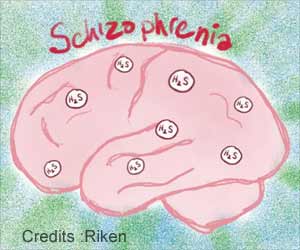Mechanosensitive ion channels play a crucial role in the mediation of touch sensations in humans and animals.
Mechanosensitive ion channels play a crucial role in the mediation of touch sensations in humans and animals. Furthermore, ion channels are pores in the cell membrane are highly responsive to external signals.
Mechanosensitive ion channels open at the slightest vibration and allow ions (electrically charged particles), to cross the cell membrane, which causes an electrical current until the channel closes again. Until now it was unclear how the ion channels were opened. Dr. Jing Hu and Professor Gary Lewin of the Max Delbrück Center for Molecular Medicine (MDC) Berlin-Buch, Germany, have now discovered the presence of a protein filament that causes the ion channels to open and shut like a tethered gate (EMBO Journal,Vol. 29, No. 4, pp 855-867; doi: 10.1038/emboj.2009.398)*.In their study, the researchers showed that the opening and closing of ion channels literally "hangs by a thread". This protein thread or filament, as Dr. Hu and Professor Lewin demonstrated, is synthesized by the mechanosensitive endings of cutaneous neurons and is probably an integral part of the mechanosensitive mechanism.
The thread is firmly tethered in the extracellular matrix (ECM), the connective protein "glue" that helps to hold cells together. However, the filament is located so close to the mechanosensitive ion channels that it can probably directly open them. The filaments were found to be 100 nanometers (nm) long (1 nanometer is equivalent to one billionth of a meter) and may link the ion channels of the cell membrane to the ECM at mechanosensitive sensory endings of the skin in mice.
The researchers demonstrated both with neuronal cultures and experiments using the isolated skin with receptors attached that the opening of mechanosensitive ion channels upon slight touch requires the 100nm protein filament. The stretching of sensory membranes by small mechanical stimuli does not appear to play any significant role in touch receptors.
When the researchers cleaved the filament with specific enzymes, thus cutting the link between the sensory ending and the extracellular matrix (ECM), the neurons were rendered completely insensitive to mechanical stimulation and touch. However, if the researchers waited twelve hours the filaments were again synthesized by the sensory cells and they became mechanosensitive once more.
"This means that touch can be perceived only when the protein filament is present. The filament renders the mechanosensitive ion channel highly sensitive to force and may even directly participate in opening and closing the channel " Professor Lewin explained.
Advertisement
Advertisement
RAS










